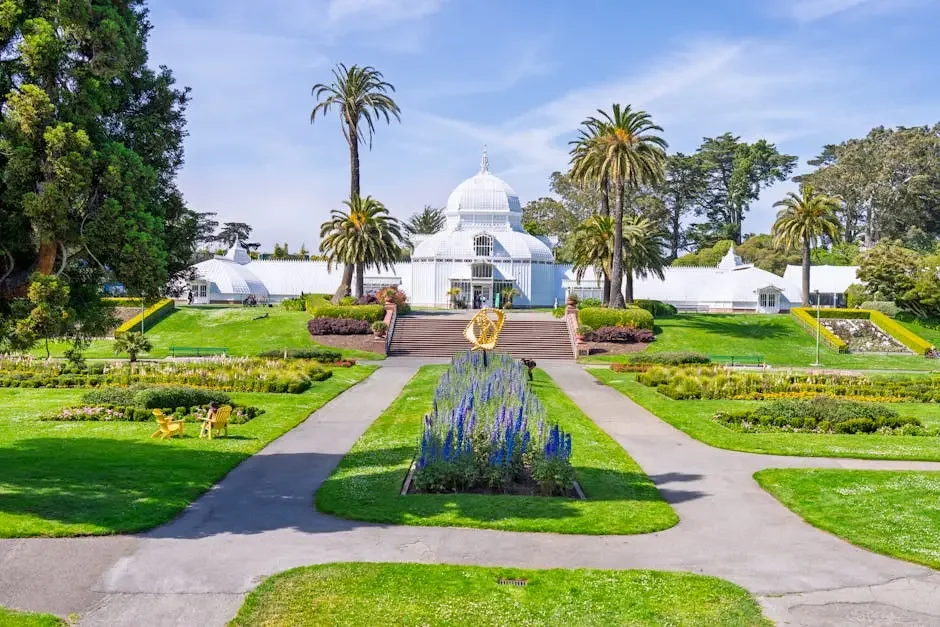8 Common Mistakes to Avoid in San Francisco Landscaping
San Francisco offers a unique climate and terrain, making landscaping a fascinating yet challenging endeavor. Whether you're a DIY enthusiast or a professional landscaper, understanding the common pitfalls can save you time, money, and headaches. Let's dive into the frequent errors and how to sidestep them for a vibrant and thriving garden.
1. Ignoring the Microclimates
San Francisco is famously known for its diverse microclimates—one area can be sunny and warm, while another is shrouded in fog just a few blocks away. This variability demands attention because what thrives in one neighborhood could wilt in another. For example, sun-loving succulents might be perfect in the sun-drenched Mission District but may not fare well in the foggy Sunset area. To choose the right plants, consider factors such as sun exposure, wind patterns, and humidity levels specific to your locality.
Recognizing these subtle differences can help create a more robust garden. By doing so, you'll not only enhance the aesthetic appeal but also increase the likelihood of your plants' survival. Many residents find that local nurseries or garden experts can provide invaluable advice tailored to your neighborhood. If you need extra support, our team offers local expertise that can take the guesswork out of your landscaping plans.
2. Overlooking the Importance of Native Plants
Incorporating native plants is crucial for a low-maintenance and sustainable garden. These plants are naturally adapted to the San Francisco climate, meaning they require less water and are more resilient against pests and diseases. Consider integrating species such as California poppies or coast live oaks, which not only thrive locally but also contribute to local ecosystem health. By using native plants, you support local wildlife, including pollinators, which are vital for biodiversity.
The demand for water is a growing concern, and native plants can make a significant difference. They are typically more drought-tolerant than exotic species, which aligns perfectly with water conservation efforts. Plus, choosing plants accustomed to local soil types can save time and resources otherwise spent on soil amendments and fertilizers. Transforming your garden by embracing native vegetation is not only environmentally conscious but also a step towards a flourishing landscape.
3. Neglecting Soil Preparation
The foundation of any healthy garden starts with good soil preparation. Failing to invest time in testing and amending your soil can result in plants struggling to take root and thrive. Most gardens in San Francisco are comprised of sandy or clay soils, each requiring specific adjustments. For instance, clay soil often benefits from the addition of organic matter such as compost to improve its structure and nutrient content.
Testing your soil's pH levels and nutrient composition is an excellent way to determine its needs. Applying amendments accordingly, such as lime to raise pH or sulfur to lower it, can create an optimum growing environment for your plants. Proper soil preparation can prevent issues like poor drainage or soil compaction, leading to healthier, more vibrant plant life. It’s akin to laying down a solid foundation before building a house; neglect in this area is not easily rectified later on.
4. Improper Watering Techniques
Water is life for plants, yet improper watering can be detrimental. San Francisco's rain patterns can be erratic, necessitating efficient watering techniques. Overwatering not only wastes this precious resource but can also lead to root rot, especially in poorly drained soils prevalent in certain areas. Underwatering, on the other hand, can stress plants, making them susceptible to pests and diseases.
One effective strategy is the use of drip irrigation systems, which deliver water directly to the plant roots, minimizing evaporation and runoff. Timers can also help regulate watering schedules, ensuring consistency. Mulching is another technique that helps retain soil moisture, which can be particularly beneficial during dry spells. By investing in water-efficient technologies, you can maintain a lush garden while conserving water.
5. Disregarding Seasonal Changes
San Francisco experiences distinct seasonal shifts that impact garden maintenance. Many homeowners overlook these changes, focusing instead on a static year-round approach. Yet, plants have varying needs across the seasons, with some requiring more pruning or additional nutrients at specific times of the year.
For instance, transitioning from the wet winters to drier summers can stress plants used to more consistent moisture levels. Adjusting watering and feeding schedules accordingly can alleviate this stress. Spring is typically ideal for planting new species, while fall might signal the time for sowing certain grasses and cover crops. Being attuned to these seasonal nuances can ensure that your garden remains healthy and vibrant throughout the year.
6. Overplanting for Instant Gratification
A common pitfall for many garden enthusiasts is the desire for instant gratification. Filling your garden beds with too many plants too quickly can create a visually appealing landscape, at least initially. However, overcrowding can lead to competition for light, nutrients, and water, potentially stunting growth and increasing vulnerability to diseases.
It's essential to consider the mature size of your plants when planning your garden layout. This approach allows you to allocate sufficient space for each plant to grow without competing with its neighbors. A well-thought-out planting plan can prevent the need for later removal or transplanting of plants, tasks which can disturb soil and roots. In this way, a patient, measured approach leads to a more sustainable and long-lasting garden.
7. Forgetting About Wildlife
Another vital aspect often overlooked in urban landscaping is the invitation to local wildlife. Your garden can be a haven for beneficial creatures like bees, butterflies, and birds. Fostering an environment that encourages this biodiversity can contribute significantly to the ecosystem's health.
Select plants that provide nectar and seeds, install birdbaths, and avoid chemicals that might harm wildlife. These small actions can create a thriving mini-ecosystem. Encouraging wildlife in your garden not only supports ecological balance but often aids in controlling pests naturally, reducing the need for synthetic interventions. By prioritizing wildlife, you invest in a healthier garden and a richer living experience.
8. Skipping Regular Maintenance
Maintenance is the unsung hero of a beautiful garden. While it's enjoyable to plant and design, the real work lies in the regular upkeep. Whether it's pruning overgrown branches, weeding flower beds, or tidying up fallen leaves, these tasks ensure that your garden remains a healthy and inviting space.
Neglect can quickly lead to chaos, with invasive species potentially taking hold and choking out desired plants. Regular checks and timely interventions can prevent minor issues from becoming major problems. Moreover, a well-maintained garden reflects positively on your home, enhancing its appeal and value. For those who might find maintenance daunting, professional services can offer comprehensive care, ensuring your garden thrives all year long.

